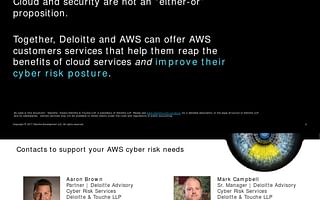Dean Reilly is a seasoned professional in penetration testing and ethical hacking. His unique methodology in uncovering security vulnerabilities has led to numerous organizations bolstering their cybersecurity measures. Dean strongly advocates for the dissemination of knowledge and frequently shares his insights on ethical hacking.
Hey there! I'm Max Stealth, your go-to cybersecurity expert here at HackerDesk. Today, I'll be shedding some light on a common question: What's the difference between a security product and a security solution? It's an important distinction to understand, so let's dive right in!
When we talk about security products, we're referring to individual tools or technologies designed to address specific security needs. These products can range from antivirus software and firewalls to intrusion detection systems and vulnerability scanners. They're like the building blocks of your security infrastructure, each serving a specific purpose.
On the other hand, security solutions take a more holistic approach. They combine multiple products and technologies to provide a comprehensive and integrated approach to security. Think of them as a bundle of tools working together to protect your digital assets.
Now, you might be wondering, "Why should I choose a security solution over individual products?" Well, let me tell you about the benefits of security solutions:
1. Enhanced Protection: Security solutions offer a layered defense approach by integrating multiple products. This means they can detect and prevent a wider range of threats compared to standalone products. It's like having a team of specialists working together to keep your systems safe.
2. Simplified Management: With a security solution, you can manage all your security tools from a centralized console. This makes it easier to monitor and control your security posture, saving you time and effort. Plus, it allows for better coordination between different security components, ensuring they work seamlessly together.
3. Improved Efficiency: Security solutions often incorporate automation and orchestration capabilities. This means repetitive and time-consuming tasks can be automated, freeing up your team to focus on more strategic security initiatives. It's like having a virtual assistant that takes care of the mundane stuff, allowing you to be more productive.
4. Comprehensive Visibility: Security solutions provide a unified view of your entire security landscape. This visibility allows you to identify patterns, analyze trends, and make informed decisions. It's like having a bird's-eye view of your security posture, enabling you to proactively address vulnerabilities and threats.
Let's take a couple of examples to illustrate the difference between a security product and a security solution:
Comparison between Security Product and Security Solution
| Criteria | Security Product | Security Solution |
|---|---|---|
| Definition | A single tool or software designed to address a specific security issue | A comprehensive approach that combines multiple security products to provide complete protection against various threats |
| Scope | Narrow, focuses on a single aspect of security | Broad, covers multiple aspects of security |
| Integration | Usually works independently, may not integrate well with other security products | Designed to work together with other security tools for a seamless security experience |
| Cost | Generally cheaper as it addresses a specific issue | Can be more expensive due to its comprehensive nature |
| Examples | Antivirus software, Firewall | Managed Security Services, Integrated Security Systems |
- Email Security: A standalone email security product might offer features like spam filtering and malware detection. However, a comprehensive email security solution would include additional components such as encryption, data loss prevention, and advanced threat protection. It covers all aspects of email security, ensuring your communication channels are secure.
- SIEM (Security Information and Event Management): A SIEM product collects and analyzes security event logs from various sources. However, a SIEM solution would go beyond that, integrating additional capabilities like threat intelligence feeds, user behavior analytics, and incident response workflows. It provides a centralized platform for managing security events and responding to incidents effectively.
In summary, while security products are individual tools, security solutions are the complete packages that bring these tools together. They offer enhanced protection, simplified management, improved efficiency, and comprehensive visibility. So, when choosing between a security product and a security solution, consider your specific needs, budget, and the level of integration and automation you require.
I hope this clarifies the difference between security products and security solutions for you. If you have any more questions or need further assistance, feel free to reach out. Stay secure, and remember, knowledge is power!














